基于PIC24FJ256DA210的16位MCU开发技术设计方案
 12
12
 拍明
拍明
原标题:基于PIC24FJ256DA210的16位MCU开发技术设计方案
1. 项目概述
简要介绍项目背景及其应用领域,明确系统的基本功能需求。例如,如果这个系统用于智能家居控制,那么目标就是实现传感器数据采集、控制指令发送、与其他设备的通信等。

2. 基于PIC24FJ256DA210的MCU简介
PIC24FJ256DA210 是Microchip的16位单片机系列中的一款,具有以下特点:
256KB的闪存,16KB的RAM。
具有高达16位的指令字宽度,适合需要中等性能的应用。
配备丰富的外设,如SPI、I2C、UART、PWM等。
支持高精度的ADC模块,适合用于精密传感器接口。
支持多种通信接口,方便与外部设备的交互。
3. 设计需求与方案目标
根据项目需求,详细列出系统的目标。例如:
采集外部模拟信号(如温度、湿度等传感器数据)。
控制多种设备(如电机、灯光、继电器等)。
具有无线通信能力(如蓝牙、Wi-Fi)。
提供用户界面(如LCD显示、按键输入)。
低功耗设计。
4. 电路设计
4.1 电源管理
首先需要选定一个稳定可靠的电源模块,保证系统的正常工作。常见的电源管理芯片包括:
LM2596:一种常用的降压转换器,适用于提供3.3V或5V电源。
LD1117:一种低压差线性稳压器,适用于电压波动不大的应用。
4.2 微控制器与外围电路
PIC24FJ256DA210 MCU:
作用:作为系统的核心控制单元,负责所有的计算、控制与通信。
选择理由:具有较高的性能、丰富的外设和低功耗特性,能够满足中等复杂系统的需求。
外部晶振:如选择一个8MHz的晶振,用于提供系统时钟。
复位电路:使用MCP130(复位IC),确保系统在上电时正常复位。
4.3 输入设备
传感器接口:可以选择使用MCP3008(8通道ADC)与模拟传感器连接。
作用:将模拟信号转换为数字信号,供MCU处理。
选择理由:MCP3008是一款高精度的ADC,能够提供稳定可靠的传感器数据。
按键与开关:为用户提供输入,选择TLQ-1000系列按钮开关。
作用:用户可以通过按钮控制设备。
选择理由:此系列开关在长期使用中的可靠性高,适用于消费电子产品。
4.4 输出设备
LCD显示屏:选择Nokia 5110 LCD,一种常见的小型显示屏。
作用:用于显示系统状态信息、传感器数据等。
选择理由:具有较高的显示质量和较低的功耗,适合嵌入式系统。
继电器模块:如SRD-05VDC-SL-C继电器模块,用于控制大功率负载。
作用:控制电机、灯光等高功率设备。
选择理由:此继电器具有较好的驱动能力,适合小型家电控制。
4.5 通信模块
Wi-Fi模块:如ESP8266,用于无线通信。
作用:实现远程控制和数据传输。
选择理由:ESP8266模块具备低成本、较高传输速率、广泛的社区支持。
蓝牙模块:如HC-05,用于短距离通信。
作用:实现手机或其他设备与系统的蓝牙通信。
选择理由:HC-05模块易于集成和配置,适合嵌入式系统。
4.6 电路框图
根据以上元器件,生成电路框图。框图应包括:
PIC24FJ256DA210 MCU的核心电路。
传感器接口、输入设备、输出设备的连接。
电源电路和复位电路的设计。
外围通信模块(如Wi-Fi、蓝牙)的连接。
5. 软件设计
5.1 启动程序
启动时,配置MCU的时钟、IO端口、通信接口等。复位电路触发后,程序开始执行。
5.2 中断管理
通过设置中断,使得系统能够实时响应外部事件(如传感器数据变化、按键按下等)。
5.3 通信协议
实现Wi-Fi和蓝牙通信协议,确保设备可以与其他设备进行远程控制或数据交换。
5.4 用户界面
编写控制界面,利用LCD显示设备展示系统状态,按键用于用户输入。
5.5 低功耗设计
优化程序逻辑,尽量减少系统的功耗。例如,使用MCU的睡眠模式或低功耗模式。
6. 性能评估与测试
对设计的硬件和软件进行功能验证,包括:
功能测试:确保所有设备的功能正常。
稳定性测试:检查系统在不同环境下的稳定性。
电源测试:测量电流、电压,确保系统能够长时间稳定工作。
7. 电路框图设计
在此部分,将通过详细描述如何使用电子设计自动化工具(如Proteus、Altium Designer等)绘制电路框图,并展示所有关键元器件的连接方式。电路框图能够帮助设计人员更直观地理解系统架构,同时为实际搭建和调试提供指导。
7.1 工具选择
Proteus:
优点:Proteus是一款流行的电路设计工具,特别适合嵌入式系统的开发。其提供了强大的仿真功能,可以在设计阶段提前检测电路问题。Proteus支持各种常见的单片机和外设模型,使其非常适合用于快速原型设计和调试。
Altium Designer:
优点:Altium Designer功能非常强大,适合大型电路设计项目。它提供了丰富的库、精确的电路布局功能,以及强大的设计验证功能,适用于商业级别的电路设计。
7.2 电路框图概述
电路框图需要包含以下几个部分的连接:
电源部分:
电池或外部电源输入端口连接到 LM2596降压稳压芯片,提供稳定的电压输出(如3.3V或5V),供给系统各个模块使用。
LM2596输出端:输出3.3V或5V电压,连接到系统的各个部分(如MCU、传感器、通信模块等)。
微控制器部分:
GPIO接口与外部设备(如继电器、按钮、传感器等)。
SPI接口用于与 MCP3008 ADC转换器(处理模拟传感器信号)和 Nokia 5110 LCD显示模块(显示信息)进行数据交换。
UART接口 用于与 HC-05蓝牙模块 和 ESP8266 Wi-Fi模块 进行通信。
PWM输出 用于控制执行设备(如电机、灯等)。
PIC24FJ256DA210 是系统的核心控制单元,它需要连接:
外设连接:
MCP3008 ADC转换器:连接到传感器模块,负责将模拟信号转换为数字信号,并将转换结果通过SPI接口传输给PIC24FJ256DA210。
继电器模块:用于控制高功率设备的开关(例如电机、家用电器等)。继电器通过GPIO控制开关状态。
按键输入模块:通过GPIO接口连接PIC24FJ256DA210,实现用户输入功能。
LCD显示模块:通过SPI接口与PIC24FJ256DA210连接,用于显示系统状态或传感器数据。
通信模块:
ESP8266 Wi-Fi模块:通过SPI接口连接到微控制器,实现Wi-Fi通信功能。该模块可以与云端服务器或智能设备进行数据交换。
HC-05蓝牙模块:通过UART接口与微控制器连接,实现短距离无线数据传输,支持用户控制设备或数据同步。
7.3 电路框图绘制步骤
电源部分连接:
在设计中首先确保电源模块的正确连接,尤其是 LM2596降压稳压器 的输入和输出电压,确保系统能够获得稳定的工作电压。
微控制器连接:
将所有的外设、传感器和通信模块通过适当的接口与 PIC24FJ256DA210 连接。
确保传感器模块的输出端连接到 MCP3008 ADC转换器 的输入端,并通过SPI接口将数据传送给微控制器。
按键连接到 GPIO端口,用于用户输入。
LCD显示模块通过SPI接口与微控制器连接,用于显示实时数据。
外设连接:
将 继电器模块 连接到微控制器的GPIO端口,允许微控制器控制继电器的开关。
使用 PWM输出 控制电机等执行设备。
通信模块连接:
ESP8266 和 HC-05 蓝牙模块与微控制器通过SPI和UART接口连接,实现无线通信。
确保通信模块的电源和地线正确连接,避免电流和信号干扰问题。
7.4 生成电路框图
使用 Proteus 或 Altium Designer 工具进行电路框图的绘制,具体步骤如下:
新建项目:在设计工具中创建一个新的项目。
添加元器件:从元器件库中选择相关元器件,如 PIC24FJ256DA210、LM2596、MCP3008、ESP8266、HC-05、继电器模块等。
布局元器件:将元器件根据功能要求合理布局,并确保电路连接不交叉或冲突。
连接电路:使用连线工具连接各个元器件。电源模块通过适当的电源轨连接各个部分。
验证电路:在设计工具中进行电路模拟,确保所有连接正确,功能正常。
7.5 电路框图示例
以下是基于上述设计方案的电路框图示例:

该框图简单展示了电源管理、微控制器、外设、通信模块和控制输出的连接关系。
7.6 电路仿真与调试
完成电路框图后,使用 Proteus 或 Altium Designer 进行电路仿真,确保每个部分能够正常工作。可以测试以下方面:
电源稳定性:检查稳压模块的输出电压是否稳定,符合系统要求。
数据流通:验证传感器数据是否成功通过ADC转换器传输到微控制器,并通过LCD显示。
通信功能:测试Wi-Fi和蓝牙模块的连接和数据传输功能。
继电器控制:测试继电器的开关控制是否正常。
通过仿真,能够提前发现电路设计中的潜在问题,并进行调整和优化。
8. 详细元器件选型及其作用
在这部分,我们将继续详细探讨每个关键元器件的选择、功能和选型理由,进一步强化设计方案的可行性和系统的整体稳定性。
8.1 PIC24FJ256DA210 微控制器
功能与作用:
核心控制单元:作为系统的大脑,负责处理所有传感器数据、执行算法、控制输出设备并管理通信模块。
集成外设:包括多种I/O接口(如GPIO、PWM、SPI、I2C、UART等),可以方便地连接其他模块,减少外围电路的设计复杂度。
低功耗设计:内置低功耗模式,有助于延长电池供电设备的工作时间。
选择理由:
性能要求:PIC24FJ256DA210 具有16位处理能力,可以满足大多数中等复杂度应用的处理需求,能够提供足够的计算能力。
存储与处理:256KB的闪存和16KB的RAM满足多任务处理和大数据处理的需求。
丰富外设支持:拥有丰富的外设接口,适合与多种传感器和执行器进行通信,特别适合复杂控制系统。
8.2 LM2596 降压稳压芯片
功能与作用:
电源管理:LM2596是一款常用的降压稳压器,可以将较高的输入电压转换为系统需要的稳定输出电压(例如3.3V或5V)。
选择理由:
高效能:具有较高的转换效率,能有效减少能量损耗。
电流支持:支持较大电流的输出(最高2A),适合驱动多个外设和通信模块。
可靠性:经过市场验证的高可靠性组件,适合大多数嵌入式系统。
8.3 MCP3008 ADC转换器
功能与作用:
模拟信号数字化:将外部模拟传感器(如温湿度传感器、光照传感器等)收集到的模拟信号转换为数字信号,供MCU进一步处理。
选择理由:
高精度:MCP3008提供8个独立的模拟输入通道,精度为10位,满足大部分传感器的要求。
SPI接口:通过SPI接口与MCU连接,速度较快,数据传输稳定。
简单集成:支持较低电压(如3.3V),便于直接与PIC24FJ256DA210进行集成。
8.4 SRD-05VDC-SL-C 继电器模块
功能与作用:
高功率控制:继电器模块可以控制高功率负载设备(如电机、电灯、家电等),而微控制器只能处理低功率的信号。
选择理由:
高可靠性:SRD-05VDC-SL-C继电器模块在低电压条件下稳定工作,适合常规的家电控制。
驱动能力强:能够驱动较大电流的负载,适用于智能家居等高功率应用。
简易控制:通过单片机的GPIO输出控制继电器,使得负载设备的开关控制变得简便。
8.5 ESP8266 Wi-Fi 模块
功能与作用:
无线通信:ESP8266模块为系统提供Wi-Fi连接能力,可以通过无线网络与智能手机或其他设备进行通信。
选择理由:
低功耗:ESP8266具有较低的功耗,适合需要长时间运行的嵌入式设备。
高集成度:集成了TCP/IP协议栈,减少了额外的软件和硬件负担。
广泛应用:具有广泛的应用案例,文档和社区支持丰富,开发方便。
8.6 HC-05 蓝牙模块
功能与作用:
短距离无线通信:HC-05模块可以为系统提供蓝牙通信能力,支持与手机、平板等设备进行短距离无线数据传输。
选择理由:
可靠性高:HC-05模块在短距离内能够稳定传输数据,适合物联网控制场景。
简单配置:HC-05模块使用串口通信,易于与单片机连接,配置过程简单。
性价比高:相对于其他蓝牙模块,HC-05性价比高,非常适合嵌入式开发。
8.7 Nokia 5110 LCD 显示模块
功能与作用:
用户界面显示:LCD屏幕用于显示系统状态信息、传感器数据、故障提示等。
选择理由:
低功耗:Nokia 5110 LCD模块消耗较低的电力,适合长时间运行的嵌入式设备。
显示效果好:具备128×64的分辨率,显示清晰,适合显示多行信息。
易于集成:使用SPI协议与微控制器连接,集成过程简单,开发资料丰富。
8.8 TLQ-1000 按钮开关
功能与作用:
用户输入:按钮用于用户输入,可以控制系统的状态或触发事件。
选择理由:
小巧耐用:TLQ-1000系列按钮开关尺寸小,耐用且适合嵌入式系统的长时间使用。
可靠性:按键具有较高的可靠性和较长的使用寿命,适合频繁使用的场合。
9. 电路框图设计
根据前述元器件的选择,电路框图需要明确地展示所有关键组件及其连接方式。以下是电路框图的设计步骤:
9.1 电源管理部分
电池/电源输入:连接到LM2596降压稳压芯片,输出稳定的3.3V或5V电源,供给整个系统。
稳压输出:为MCU、传感器、通信模块和其他外围设备提供必要的电压。
9.2 微控制器与外设连接
PIC24FJ256DA210连接:
GPIO与传感器、按键、继电器等模块连接。
SPI接口与MCP3008 ADC转换器、Nokia 5110 LCD屏、ESP8266、HC-05等通信模块连接。
UART接口与其他设备进行数据交换。
PWM输出与继电器和电机控制设备连接。
9.3 输入与输出设备
传感器接口:通过MCP3008连接多个模拟传感器,转换模拟信号为数字信号,传递给MCU。
LCD显示:通过SPI连接Nokia 5110 LCD显示模块,展示设备状态、传感器数据等。
按键控制:通过GPIO接口连接多个按钮,用于用户输入。
无线通信:ESP8266通过SPI接口连接到MCU,实现Wi-Fi连接。HC-05通过UART接口实现蓝牙通信。
10. 软件设计
10.1 启动与初始化
系统启动时,首先初始化MCU的时钟、IO端口、外设、通信模块等。复位电路通过硬件触发系统的复位,确保每次上电时系统从稳定状态开始运行。
10.2 中断服务例程
使用定时器和外部中断,确保系统能够响应外部事件(如按键按下、传感器变化等)。中断服务例程将快速处理这些事件,并进行必要的响应。
10.3 通信协议与控制
Wi-Fi通信协议:通过ESP8266模块与远程设备进行数据交换,可以发送系统状态、传感器数据等,也可以接收控制命令。
蓝牙通信协议:通过HC-05模块实现短距离控制或数据交换。
10.4 用户界面设计
通过LCD显示模块展示当前系统的状态,如温度、湿度等传感器数据、设备开关状态等。按键输入控制设备开关、模式切换等功能。
10.5 低功耗设计
优化程序代码,减少MCU的运算和外设的活动,适时进入低功耗模式。系统可以周期性地进行数据采集和通信,间歇性地进入睡眠模式。
11. 性能评估与测试
在设计完成后,进行全面的性能评估与测试,确保电路和程序的稳定性。
11.1 功能测试
通过逐一检查每个模块的功能,确保其正常工作。包括传感器数据采集、控制指令发送、无线通信等。
11.2 电源测试
测试系统在不同电压下的工作稳定性和功耗,确保系统在设计的功耗范围内稳定工作。
11.3 稳定性测试
对系统进行长期运行测试,确保各个模块和电路的稳定性,避免出现故障或异常。
12. 总结与展望
总结项目的成果,回顾设计过程中的优点与不足,提出未来的改进方向,如引入更高效的通信协议、更强大的处理能力、更低的功耗等,提升系统的性能和可扩展性。
责任编辑:David
【免责声明】
1、本文内容、数据、图表等来源于网络引用或其他公开资料,版权归属原作者、原发表出处。若版权所有方对本文的引用持有异议,请联系拍明芯城(marketing@iczoom.com),本方将及时处理。
2、本文的引用仅供读者交流学习使用,不涉及商业目的。
3、本文内容仅代表作者观点,拍明芯城不对内容的准确性、可靠性或完整性提供明示或暗示的保证。读者阅读本文后做出的决定或行为,是基于自主意愿和独立判断做出的,请读者明确相关结果。
4、如需转载本方拥有版权的文章,请联系拍明芯城(marketing@iczoom.com)注明“转载原因”。未经允许私自转载拍明芯城将保留追究其法律责任的权利。
拍明芯城拥有对此声明的最终解释权。




 产品分类
产品分类
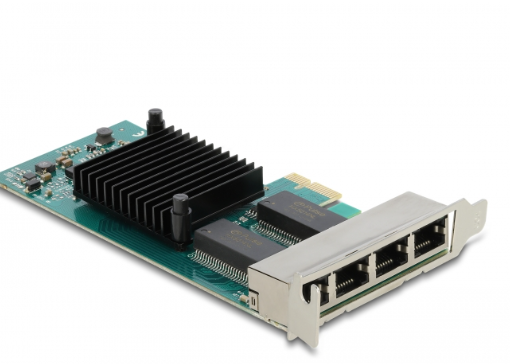
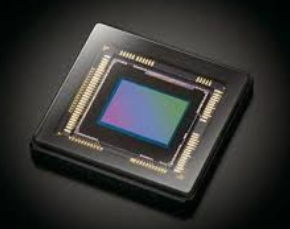
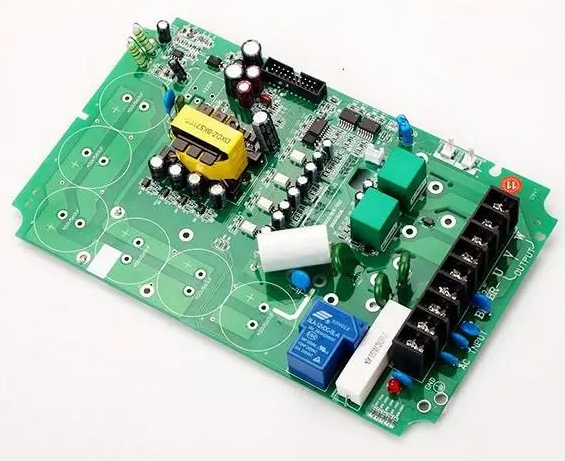
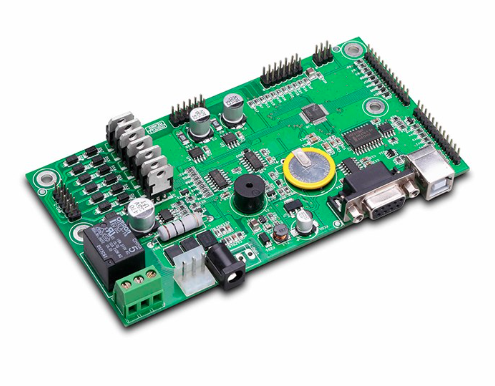
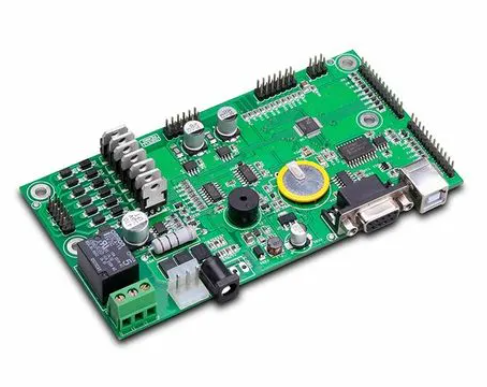
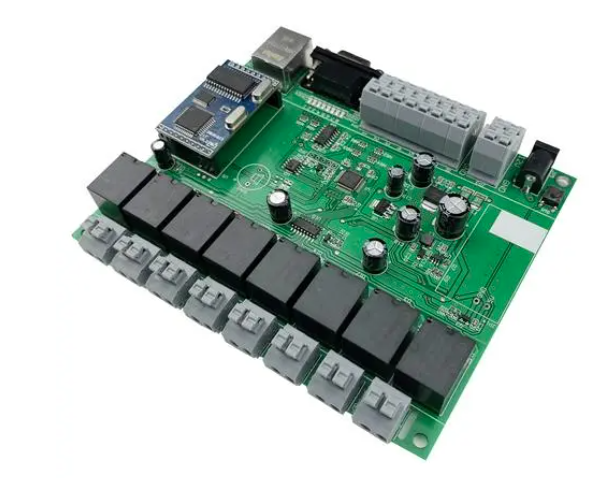



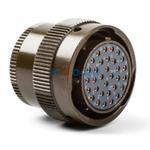














 2012- 2022 拍明芯城ICZOOM.com 版权所有 客服热线:400-693-8369 (9:00-18:00)
2012- 2022 拍明芯城ICZOOM.com 版权所有 客服热线:400-693-8369 (9:00-18:00)


